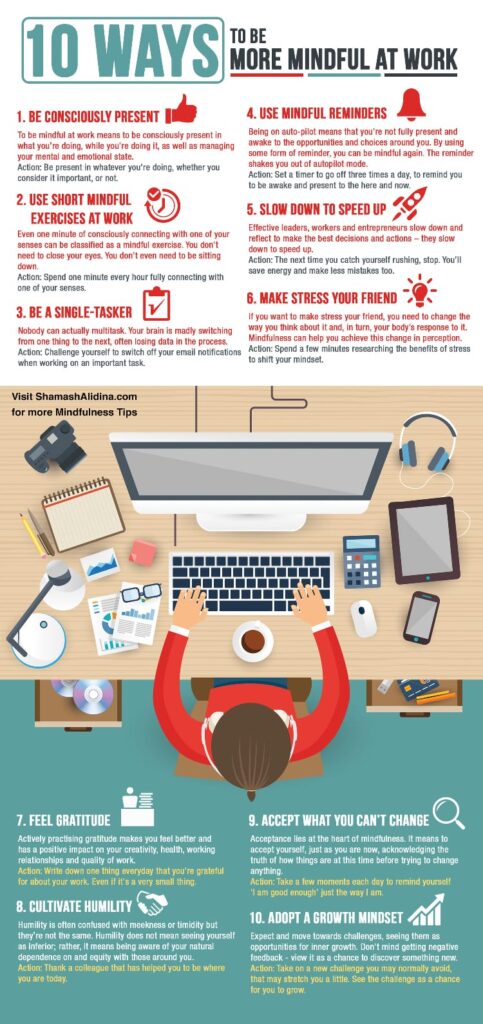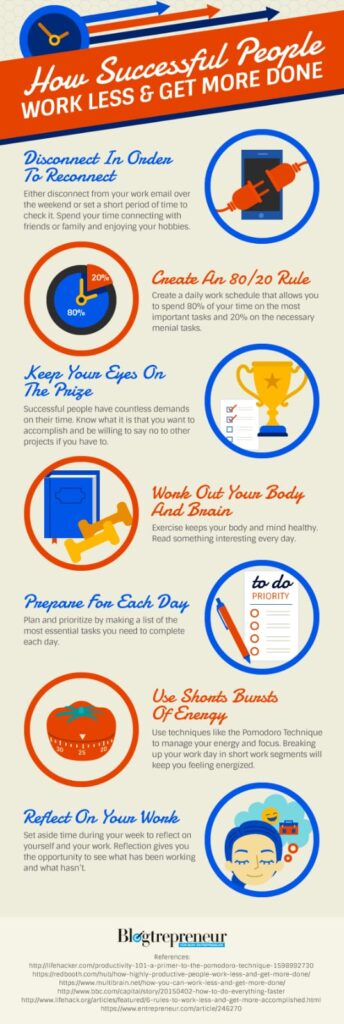The Productivity Paradox
In today’s fast-paced world, the prevailing belief is that working longer hours leads to greater success. However, this notion is increasingly being challenged by experts who highlight the productivity paradox, where increased effort doesn’t necessarily equate to better outcomes.
For instance, research indicates that after a certain point, additional work hours can lead to diminishing returns, resulting in decreased efficiency and potential burnout.
Arianna Huffington, co-founder of The Huffington Post, experienced this firsthand when she collapsed from exhaustion, prompting her to reevaluate the definition of success. She now advocates for a model that integrates well-being into our lives, emphasizing that true success comes from living a balanced life.
Furthermore, the traditional 8-hour workday, rooted in the Industrial Revolution, may not align with the demands of modern knowledge work. Studies suggest that deep, focused work is sustainable for only about three to four hours daily, challenging the efficacy of extended work hours.
In response to these insights, many high-performers are turning to mindfulness practices to enhance productivity without overexertion. Mindfulness, which involves being present and fully engaged in the moment, has been shown to improve focus and reduce stress, making it a valuable tool for achieving more while working less .
The High-Performer’s Dilemma: Burnout vs. Output
High-achievers often grapple with the challenge of maintaining peak performance without succumbing to burnout. The relentless pursuit of productivity can lead to a state of toxic productivity, where individuals prioritize work over their physical and mental health, resulting in diminished returns and personal dissatisfaction.
This phenomenon is further exacerbated by the misconception that multitasking enhances efficiency. In reality, multitasking can impair cognitive function and reduce overall productivity, as the brain struggles to switch between tasks effectively.
Moreover, the belief that longer work hours equate to higher productivity is being debunked. Research indicates that after a certain threshold, additional work hours can lead to decreased efficiency and increased errors, highlighting the importance of strategic rest and recovery.
To navigate this dilemma, high-performers are increasingly adopting mindfulness practices. By cultivating awareness and presence, mindfulness helps individuals manage stress, enhance focus, and make more deliberate decisions, thereby improving performance without the need for excessive work hours .
What Is Mindfulness and Why It Works
Mindfulness, defined as the practice of maintaining a nonjudgmental awareness of one’s thoughts, emotions, and experiences in the present moment, has been shown to offer numerous benefits for mental and physical well-being.
Unlike meditation, which is a formal practice, mindfulness can be integrated into daily activities, allowing individuals to fully immerse themselves in the present moment.
Scientific research indicates that mindfulness can lead to structural and functional changes in the brain. For instance, practicing mindfulness has been associated with increased grey matter density in regions involved in emotion regulation and memory, such as the prefrontal cortex and hippocampus . Additionally, mindfulness practices can reduce the size of the amygdala, the brain’s stress center, leading to improved emotional regulation.
Beyond neurological changes, mindfulness has been linked to various health benefits. Regular mindfulness practice can lower stress levels, decrease symptoms of depression, improve memory, and enhance relationships . Moreover, mindfulness can contribute to better sleep quality and lower blood pressure by promoting relaxation and reducing anxiety.
Incorporating mindfulness into daily routines can be a powerful tool for high-performers seeking to enhance focus, resilience, and overall well-being.

This infographic outlines practical mindfulness techniques—like single-tasking, stress reframing, and using mindful reminders—that high performers integrate into their routines. By being consciously present and slowing down strategically, they enhance focus, reduce errors, and ultimately achieve more with less effort.
Case Studies: How Top Performers Use Mindfulness
Many high-performing individuals across various fields have embraced mindfulness practices to enhance their performance and well-being.
Marc Benioff: The CEO of Salesforce, attributes his success to a consistent mindfulness practice. He begins each day with 30 to 60 minutes of meditation, a habit he has maintained since 1992. Benioff believes that mindfulness helps him manage stress and maintain clarity in decision-making.
To promote mindfulness within his company, he has incorporated “mindfulness zones” on every floor of Salesforce’s headquarters, providing employees with spaces to practice meditation and find calm amidst their workday.
Arianna Huffington: The founder of Thrive Global, experienced the consequences of burnout firsthand, leading her to prioritize well-being and mindfulness. She advocates for integrating mindfulness into daily life to combat stress and improve productivity.
Through Thrive Global, Huffington offers science-based solutions to end stress and burnout, emphasizing the importance of mindfulness practices in achieving sustainable success.
In the realm of sports, Michael Phelps, the most decorated Olympian of all time, utilized visualization techniques as a form of mindfulness to prepare for competitions. By mentally rehearsing his races, Phelps enhanced his focus and performance under pressure.
Similarly, Serena Williams, renowned for her achievements in tennis, incorporates meditation and deep breathing exercises into her routine to manage stress and maintain composure during high-stakes matches.
These examples illustrate that mindfulness is not limited to a specific domain but is a versatile practice that can benefit individuals striving for excellence in various fields.
Practical Mindfulness Techniques for Busy Leaders
Busy leaders often struggle to find time for mindfulness, yet incorporating even brief practices can yield significant benefits. One effective approach is the 5-minute mindful breathing exercise, which helps calm the nervous system and improve focus during hectic schedules.
Another technique is body scanning, which involves paying close attention to different parts of the body to release tension and promote relaxation. This practice can be done seated at a desk or lying down and is especially helpful for busy executives dealing with physical stress.
Mindful walking is a versatile technique that integrates movement with awareness. Leaders can use this method during short breaks or commutes, focusing on sensations like the rhythm of their steps or the feeling of air on their skin, which helps reset the mind.
Incorporating mindful pauses throughout the workday is another practical method. Taking a few seconds to notice breath, posture, or surroundings before shifting tasks encourages mental clarity and reduces reactivity.
Leaders can also use guided mindfulness apps like Calm or Insight Timer to fit regular practice into their busy routines. These apps offer short sessions tailored to stress relief, focus, and leadership skills.

This infographic illustrates how successful people boost productivity through mindful habits like digital detox, the 80/20 rule, and focused goal setting. By aligning mental clarity with intentional actions, high performers achieve more while working less.
The Impact of Mindfulness on Leadership Effectiveness
Mindfulness enhances leadership by improving emotional intelligence, decision-making, and interpersonal skills. Studies show that mindful leaders are better equipped to manage stress and respond thoughtfully to challenges, fostering a positive workplace culture.
Research from the University of Massachusetts found that mindfulness training improves leaders’ ability to regulate emotions and maintain focus under pressure, key traits for effective leadership.
Moreover, mindful leaders tend to exhibit greater empathy and active listening skills, which contribute to stronger team relationships and increased employee engagement.
Mindfulness also supports creativity and innovation by enabling leaders to approach problems with openness and curiosity rather than reactive judgment.
Overall, integrating mindfulness into leadership practice fosters resilience and adaptability, qualities essential for navigating today’s complex business environment.
A Harvard Business Review article highlights that mindfulness can physically reshape the brain, particularly areas linked to attention, self-awareness, and emotional regulation. This neuroplasticity allows leaders to become more self-reflective and less impulsive, enabling balanced and strategic decision-making in high-pressure scenarios.
Furthermore, organizations that promote mindfulness-based leadership often report improved organizational outcomes. According to McKinsey & Company, cultivating a mindful leadership culture leads to increased productivity, reduced employee burnout, and higher levels of innovation—all critical factors for maintaining a competitive edge in today’s fast-evolving markets.
Overcoming Common Challenges in Practicing Mindfulness
Despite its benefits, many busy leaders find it difficult to maintain a consistent mindfulness practice due to time constraints and mental resistance.
One common hurdle is impatience or frustration when beginners don’t immediately experience calm or focus, which can lead to giving up early. Recognizing that mindfulness is a skill developed over time helps practitioners stay committed even when progress feels slow.
Another challenge is distraction by digital devices, which often compete for attention during attempts at mindful breaks. Leaders can overcome this by setting specific tech-free periods or using apps that block notifications temporarily.
Self-judgment during mindfulness, such as thinking “I’m doing it wrong,” can also hinder progress. Cultivating a non-judgmental attitude toward thoughts and experiences is core to mindfulness practice.
By identifying these challenges and applying practical strategies, busy leaders can build a sustainable mindfulness routine that fits their demanding lifestyles.
Furthermore, creating a supportive environment can significantly improve mindfulness adherence. Leaders who embed mindfulness into their team culture—such as starting meetings with a brief grounding exercise—reinforce the value of the practice and encourage collective participation.
Incorporating micro-mindfulness moments, such as mindful breathing between tasks or a short body scan during breaks, allows leaders to integrate mindfulness without disrupting their workflow. These simple yet powerful techniques help reduce cumulative stress and enhance daily productivity.
Measuring Success: Mindfulness and Productivity Metrics
To evaluate the impact of mindfulness on productivity, leaders can track specific metrics like focus duration, stress levels, and decision-making quality.
Using tools such as productivity journals or apps can help quantify improvements in work output and emotional resilience over time.
Regular self-assessment through mindfulness questionnaires can reveal growth in attention regulation and emotional balance.
Organizations may also measure team engagement and employee well-being to understand the broader effects of mindfulness initiatives in leadership.
By combining qualitative insights with quantitative data, leaders can make informed decisions about refining mindfulness practices to maximize their effectiveness.
Frequently Asked Questions about How High-Performers Use Mindfulness to Achieve More While Working Less
What is mindfulness and how does it help high-performers?
Mindfulness is the practice of staying present and fully engaged in the moment, which helps high-performers reduce stress, improve focus, and enhance decision-making.
How can mindfulness help me work less but achieve more?
By increasing concentration and reducing mental clutter, mindfulness allows you to work more efficiently, prioritize better, and avoid burnout.
Is mindfulness only about meditation?
No, mindfulness includes various practices like mindful breathing, body scans, and simply being present during daily activities.
How long should I practice mindfulness to see benefits?
Even short daily sessions of 5 to 10 minutes can lead to noticeable improvements in productivity and well-being over time.
Can mindfulness improve creativity at work?
Yes, mindfulness fosters open-mindedness and mental flexibility, which can boost creative problem-solving.
Does mindfulness reduce stress for high-achievers?
Absolutely, mindfulness helps regulate emotions and reduce stress hormones, promoting calmness under pressure.
Can mindfulness help with decision-making?
Mindfulness enhances clarity and reduces impulsivity, leading to better, more thoughtful decisions.
Is mindfulness suitable for all types of work environments?
Yes, mindfulness practices can be adapted to fit any professional setting, from corporate offices to remote work.
Do I need a quiet space to practice mindfulness effectively?
While a quiet space helps, mindfulness can be practiced anywhere, even amidst noise or distractions.
How do high-performers stay consistent with mindfulness?
They incorporate it into their daily routine, often pairing it with existing habits like morning rituals or breaks.
Can mindfulness improve focus during long work hours?
Yes, it trains the brain to resist distractions and maintain sustained attention.
Are there specific mindfulness techniques preferred by high-performers?
Common techniques include focused breathing, body scans, and mindful pauses between tasks.
How does mindfulness influence work-life balance?
Mindfulness promotes self-awareness and stress reduction, helping maintain healthier boundaries between work and personal life.
Can mindfulness help overcome procrastination?
Yes, by increasing present-moment awareness, it helps identify and reduce avoidance behaviors.
Is mindfulness linked to better physical health?
Mindfulness can lower blood pressure, improve sleep quality, and boost immune function, supporting overall health.
Can I use mindfulness during stressful meetings or presentations?
Definitely, simple mindful breathing can calm nerves and enhance presence in high-pressure situations.
How quickly can mindfulness impact productivity?
Many report feeling more focused and calm even after a few sessions, with cumulative benefits over weeks.
Are there any apps recommended for mindfulness practice?
Popular apps include Headspace, Calm, and Insight Timer, which offer guided sessions for busy professionals.
Can mindfulness improve leadership skills?
Yes, it enhances emotional intelligence, empathy, and decision-making critical for effective leadership.
What’s a simple way to start practicing mindfulness today?
Begin with mindful breathing for a few minutes, paying attention to your breath without judgment.
-Authored By Pragna Chakraborty





